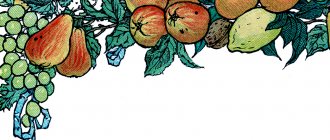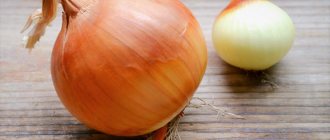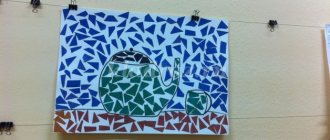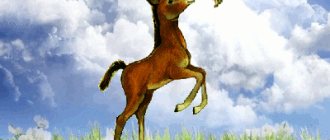We enrich and activate our vocabulary. We consolidate knowledge of nouns : salad, soup, juice, cucumber, tomato (tomato), potatoes, beets, carrots, onions, turnips, cabbage, radishes, peppers, garlic, eggplant, zucchini, squash, greens, parsley, dill, radish, pumpkin , beans, beans, peas, pods, tops, roots, fruits, seeds, tubers, leaves, head of cabbage, salad, beetroot, vinaigrette, juice, bag, box, path, harvest, vegetable garden, bed, soil, planting, watering; adjectives: colorful, large, long, short, triangular, oval, ripe, unripe, ripe unripe, raw, boiled, hard, soft, bitter, sweet, sour, salty, juicy, healthy, light, heavy, fresh, large, small , red, green, yellow, ripe, unripe, tasty, tasteless, sweet, sour, bitter, salty, pickled, canned, raw, boiled, healthy, large, small, round, oval, elongated, oblong, smooth, ripe, fragrant , aromatic, juicy, vegetable; verbs: plant, care, grow, sow, loosen, ripen, water, ripen, collect, sprinkle, pull out, dig, cut, wash, rub, cook, stew, fry, eat, crunch, prepare, salt, ferment, preserve, pickle, grow, grow, ripen, water, weed, clean, dig, pick, pull out, collect, dry, squeeze, rub, treat, clean, share; adverbs: high, low, tasty, tasteless, healthy, harmful.
Preview:
Summary of a lesson on cognitive development for the senior group on the topic “Vegetables”
Clarify children's knowledge about vegetables, how to
grow vegetables and where they grow.
Give children an idea of the benefits of vegetables for strengthening
Develop memory, thinking, and formation of learning skills.
To promote the desire to take care of your health and eat right.
Models of trees and beds, pictures of vegetables and fruits, a parcel with natural vegetables and fruits (carrots, cucumbers, cabbage, apples and pears), a letter.
Vocabulary work: vitamins, head of cabbage, veins, ferment, chop, grate.
An excursion to the garden, looking at vegetables, looking at fruits and conducting a lesson to consolidate knowledge about fruits and where they grow. A conversation about the use of vegetables and fruits to improve the health of the human body. Conducting didactic games “What grows in the garden, in the bed?”, “Find out by taste”, “Name which one, which one, which one?”
Children sit in front of the teacher's table in a semicircle. The teacher brings the package to the group.
-Hello guys! Many different vegetables and fruits grew in my garden and garden, but I forgot what they are called, where they grow and what benefits they bring to humans. Help me please! Postman Pechkin.
Educator: Look how many different vegetables and fruits Postman Pechkin sent us, let's help him. Each of these vegetables and fruits is not only tasty, but also very beneficial for our body. What are the benefits of vegetables? Let's remember what are the benefits of fruits? (They contain many vitamins and other beneficial substances that help us be strong and healthy.)
-What shape is it? What does it look like? (On a triangle, triangular shape)
-What size is it compared to this vegetable? (teacher
shows a small cucumber for comparison) (large)
-Is the surface of the carrot smooth or rough? Touch (children)
-Carrots, hard or soft (if children find it difficult, offer
touch again) (hard)
-Do you think carrots are a vegetable or a fruit? Why do you think so? (This is a vegetable because it grows in a garden bed)
- How are carrots useful? (The body needs it for growth and for vision.)
-How can you grow carrots? (from seed)
— How can you eat carrots, what can you cook from them? (Can be eaten raw, in salad, or cooked in soup)
The teacher takes out another vegetable: Look, what is this? This is a cucumber.
-What kind of paint will we use to paint a cucumber? (Green)
- What shape is it? (It is oval, elongated)
-Is the cucumber hard or soft? (solid)
-How can you grow a cucumber? (from a small grain)
- Let's cut the cucumber, see what's inside it and what it tastes like? (The teacher cuts the cucumber and shows the children that there are small seeds inside the cucumber)
-How can you eat it? (raw, in salads, can be pickled, marinated)
-What kind of paint will we use to paint cabbage? (light green)
-What size is it compared to carrots and cucumbers? (large)
-How do cabbage leaves feel to the touch? (smooth with
veined, hard, bend.)
-How to grow cabbage (from seeds)
-Is cabbage a vegetable or a fruit? Why do you think so? (this is a vegetable, it grows in the garden)
-How can you use cabbage? (you can eat it in a salad, boil it, ferment it)
And you and I also know how to cook cabbage salad. Let's stand in a circle and play. We chop the cabbage, chop it, (2 times)
We three, three, carrots (2 times)
We salt the cabbage, salt it, (2 times)
We press and press cabbage. (2 times).
-Where do vegetables grow? (in the beds).Where do fruits grow? (on a tree) Next, the game is played. After the game: Well done, guys, they properly placed vegetables and fruits in their houses.
Source
Planning educational work on the topic “Vegetable garden. Vegetables" (senior group)
Planning educational work for October.
Theme of the month, week, day (Monday) “Vegetable garden. Vegetables".
Time
Joint activities between adults and children
Independent activities of children
Interaction with specialists, parents, social partners
Group, subgroup
individual
Morning
Morning exercises.
Conversation on the topic: “Tasty and healthy.”
Objectives: Teach children about the importance of regularly eating vegetables.
Examination of illustrations “Vegetables”.
Didactic game “Draw the same amount” (Dima, Lida, Danya Kh.).
Objectives: to consolidate in children the ability to establish correspondence between the number of objects, number and figure; consolidate the concepts of “same”, “equal amount”.
Role-playing game “Shop”, plot: “Vegetable shop”.
Objectives: to improve children’s ability to unite in play, distribute roles, and perform game actions.
Invite parents to go with their children to the market (fair) and look at the abundance of nature’s gifts (new harvest).
Organized educational activities
Speech development. Getting to know the variety of words, modeling, finding differences in two similar drawings.
Goal: to promote children’s understanding of the term “word” and its correct use. Continue to introduce the simplest modeling, depicting the word as a rectangle. Introduce a variety of words. Develop children's attention and visual functions by finding differences in two similar drawings. Develop fine motor skills. Develop skills of self-control and self-esteem. (E.V. Kolesnikova “From Word to Sound”, p. 4).
Drawing according to the content of riddles and poems. Riddles from the garden.
Goal: to learn to convey the shape and characteristic features of vegetables according to their description in riddles; create expressive color and fantasy images; mix paints yourself to obtain the desired shade; clarify the idea of well-known natural objects. (I.A. Lykova “Art activities in kindergarten”, p. 44).
Walk
Sky observation.
Objectives: invite children to look at the sky and describe it. Offer to return to the observation at the end of the walk, tell what has changed.
P/i "Carousel".
Objectives: exercise children in running in a circle, holding hands, changing tempo. Develop coordination of movements and attention.
Labor: work in the garden.
Outdoor game “Jumping over the ditch” (Polina, Yulia, Timofey, Sasha).
Objectives: to improve children's ability to jump on two legs across several lines in a row (teach them to take the correct starting position, land on bent legs).
Sports game badminton.
Objectives: teach children to hit a flying shuttlecock, toss and hit, introduce them to different ways of moving around the court.
Develop dexterity and joint mobility.
Games with external material.
Preparing for lunch. Dinner.
Preparation for sleep.
Reading a story by N. Nosov
"Gardeners."
Objectives: to develop artistic perception and aesthetic taste, to develop literary speech.
Canteen duty
(Semyon).
Objectives: to cultivate responsibility, conscientiousness, and develop teamwork skills.
Self-service: exercise “Let’s help Pinocchio get dressed.”
Objectives: teach children to dress and undress independently, carefully put clothes in a locker, and keep it in order.
Afternoon/evening
Health-improving activities after sleep: awakening gymnastics.
Work in the book corner: looking at artists’ illustrations of Russian folk tales familiar to children.
Objectives: invite children to try to remember fairy tales from illustrations, note the means of expression that determine the characters of the images.
Printed board game “ABC” (Seryozha, Egor, Danya P., Dasha F.).
Objectives: teach children to find familiar letters, form syllables and short words.
Games with building material "Machines".
Objectives: to form children’s ideas about various machines, their functional purpose, structure; about wheels and axles, about ways to attach them, to develop curiosity, ingenuity and creativity.
Organized educational activities
Physical education (according to the plan of the physical director)
Walk
Bird watching: magpie.
Objectives: teach children to observe birds, identify features of appearance and behavior, and learn to recognize birds by voice. Talk about the character and habits of the magpie, about the characteristics given to it in sayings and Russian folk tales.
P/n “Do as I say.”
Objectives: developing the ability to navigate in space, act according to verbal instructions, compare your actions with the rules of the game.
Planning educational work for October.
Theme of the month, week, day (Tuesday) “Vegetable garden. Vegetables".
Time
Joint activities between adults and children
Independent activities of children
Interaction with specialists, parents, social partners
Group, subgroup
individual
Morning
Morning exercises.
Conversation on the topic “Pills grow in the garden.”
Objectives: talk about the beneficial and medicinal properties of vegetables.
Individual work on FEMP. Didactic game “What, where?” (Lesha, Dima, Dasha F., Timofey).
Objectives: to consolidate the ability to determine the spatial arrangement of objects in relation to oneself, to denote it in words. Exercise children in counting within 6.
Independent play activity.
Objectives: to develop children’s independence, initiative, and to develop the ability to choose a game based on their interests.
Individual conversations and consultations at the request of parents.
Organized educational activities
Cognitive development (FCCM) “Vegetable garden”.
Goal: to strengthen the ability to distinguish between fruits and vegetables; develop sensory perception, microorientation skills on the table, verbally indicate the spatial arrangement of objects; improve motor skills in using stencils to depict vegetables and fruits; develop attention, thinking, memory, speech (N.E. Veraksa “Complex classes”, p. 64).
Application “Cucumbers and tomatoes lie on a plate.”
Goal: continue to practice the ability to cut out round and oval-shaped objects from paper in the form of squares and rectangles, cutting corners using a rounding method; develop coordination of movements of both hands; strengthen the ability to carefully paste images
(N.E. Veraksa “Complex classes”, p. 73).
Music (according to the music director's plan)
Walk
Observing the work of adults.
Objectives: discuss with children why they dig up soil in flower beds and dig up shrubs and trees. Explain how plants are prepared for winter.
Outdoor game "Wolf and kids".
Objectives: teach gaming activities with strict adherence to the rules;
develop reaction speed; cultivate courage.
Labor: sweeping the veranda.
Didactic game “It happens - it doesn’t happen” (Nikita V., Polina, Yulia, Lida).
Objectives: to develop analytical thinking, imagination, fantasy, to develop the ability to compare, to distinguish a real situation from an unreal one.
Sports game towns.
Tasks: continue to introduce children to a new game, teach them to hold the bat correctly, knock down pins by throwing it from the side or from the shoulder. Develop interest in sports games.
Preparing for lunch. Dinner.
Preparation for sleep.
Reading fiction at the request of children.
Objectives: to develop artistic perception and aesthetic taste, to develop literary speech.
Canteen duty (Egor).
Objectives: to develop working skills in a team, to cultivate diligence, responsibility for the assigned work.
Games with building material “Lethal vehicles”.
Objectives: to expand children’s understanding of various aircraft and their purpose. Develop design skills.
Afternoon/evening
Health-improving activities after sleep: awakening gymnastics.
Introduction to the art of painting: “What secret does a still life tell us?”
Objectives: to arouse children’s interest in a more complex type of still life, including depictions of living nature objects.
Individual work on speech development (Seryozha, Sasha, Semyon).
Objectives: to train children in writing descriptive stories about vegetables, to teach them to use quality adjectives.
Independent activity of children in activity centers.
Role-playing game "Hospital".
Objectives: develop interest in the game, develop knowledge about the function of the hospital, its role for people.
Walk
Observation: dew.
Tasks: draw children’s attention to the soil, grass, invite them to express opinions on how dew occurs, talk about this phenomenon. To develop children's powers of observation and love of nature.
Outdoor game “We are funny guys.”
Objectives: to develop the ability to act on a signal, to train children in running. Develop attention, coordination of movements, agility and endurance.
Independent motor activity of children.
.
Planning educational work for October.
Theme of the month, week, day (Wednesday) “Vegetable garden. Vegetables".
Time
Joint activities between adults and children
Independent activities of children
Interaction with specialists, parents, social partners
Group, subgroup
individual
Morning
Morning exercises.
Conversation on the topic “Take care of your health from a young age.”
Objectives: to develop the idea that health is the main value of human life. Develop cognitive interest.
Individual work with Lida, Timofey, Egor on fiction
Objectives: to practice the ability to recite short poems by heart.
Role-playing game “Shop”: plot “Vegetable shop”.
Objectives: to teach children to use their ideas about the work of a store, the work of sellers, and loaders in the game.
Individual conversations about children's successes.
Organized educational activities
Speech development. Theme "Vegetables".
Goal: to teach children to name vegetables, to consolidate the general concept of “vegetables” in the dictionary, to teach them to write stories about vegetables according to the proposed visual plan. Introduce children to polysemantic words, explain the difference in the meanings of these words. (N.E. Teremkova “Speech therapy homework for children 5-7 years old with OHP”, p. 5).
…
Preview:
VEGETABLES ON OUR TABLE
(for children of senior preschool age)
Goal: Expand and systematize children’s ideas and knowledge about vegetables. Develop interest in the plant world: tell children that vegetables grow in the garden. Give children the idea that vegetables are a source of vitamins. Teach children to solve descriptive riddles. Improving the grammatical structure of speech: matching adjectives with nouns. Development of coherent speech, visual perception and attention, fine and gross motor skills, creative imagination.
Vocabulary: harvest, vegetable garden, garden bed, vegetables, potatoes, cabbage, carrots, tomato, cucumber, garlic, zucchini, eggplant, beets, onions; grow, clean, drip, pull, cut, salt, chop; tasty, sweet, juicy, healthy, soft, hard, smooth, rough, red, green, yellow, orange, purple, brown.
Material: Basket with natural vegetables; panel: vegetable garden; cards for each child with pictures of vegetables; pictures with missing parts of the image, colored pencils for each child.
Summary of educational activities on the topic “Vegetables”. Senior group
Lesson in the senior group of kindergarten.
Topic: VEGETABLES Objectives: 1. Reveal children’s knowledge on the topic. 2. Develop the skill of differentiating words of different grammatical categories. 3. Develop the ability to coordinate adjectives with nouns in a complex sentence. 4. Activate and expand your vocabulary on the topic. Preliminary work: before the lesson, 1-2 targeted walks in the garden are carried out. Children get to know vegetables. Equipment: vegetables (raw, boiled, salted), dummies, pictures, diagrams, basket, “Magic bag”. PROGRESS OF THE LESSON: I. Organizational moment. There are various pictures displayed on the panel; select those that match the toy on display (tomato). Arrange on the panel and remember the order. The speech therapist covers the pictures displayed by the children and asks them to name them from memory. At the same time, he shows a place on the panel and asks: “What is there?” II. Introduction to the topic. The speech therapist shows the children vegetables and they name them. Attention is paid to color, shape, taste and other qualities, properties, signs. Task:
the called child shows the named vegetable among others or names the one being shown.
Turning away from the table, from memory, several children name the vegetables that are on the table. III. Activation of existing knowledge. 1. Didactic game “Magic Bag”. Identify the vegetable by touch, name it, describe its characteristics. 2. Exercise “Guess the vegetable by taste.” A piece of boiled or raw vegetable is placed in the child’s mouth with his eyes closed. Each child is given a mix of boiled and raw carrots, boiled potatoes, tomatoes, fresh and pickled cucumbers. The child must guess the taste and describe the vegetable. Here the speech therapist emphasizes with his voice when asking the question: “What is this?”, “Which one?” 3. Exercise in differentiating categories of words. The speech therapist shows a picture of “cucumbers” and asks the children to pose a question (“What is this?”). Then he attaches this picture to the panel and says that here we will put pictures to which you can ask the same question. Then a green strip with a picture of a cucumber is shown and the children are asked about the color (“What is it?”); about the form, etc. A stripe, an oval, a cucumber are displayed side by side on the panel and the children are informed that we will put pictures here that describe the properties of the object. Then the picture “A boy is planting vegetables” is shown and the speech therapist asks the children to question the boy’s actions. How can I ask, etc. After this, the speech therapist shows the pictures, the children ask a question, answer and put it in the correct column on the panel. Reinforcement:
a) come up with your own, choose words for each column;
b) speech therapist: “I will name different words, and you should raise your hand when you hear a word that can be included in this (noun, adjective, verb) column. IV. Dynamic pause. Turnips, beets and carrots cleverly hid in the garden bed. (sit down, cover your eyes with your hands.)
We’ll pull the tops, we’ll get them out of the ground.
(stand up, imitate the “pull the carrot” movements with your hands from bottom to top).
The kids will have lunch: Borscht, mashed potatoes and vinaigrette.
(high jumps with turns in different directions). V. Learning new material. Models of vegetables are laid out on the table and there is a basket. The speech therapist says: “We planted a vegetable garden ourselves in the spring. We planted it ourselves, watered it and now... What grew in our garden? (Vegetables). We will put vegetables in the basket and say: I put a cucumber. It is hard, long, green. Another child talks about another vegetable. Then a complex sentence is made about two children at once: “Tanya put a big tomato, and Vova put a small cucumber.” “Petya put red carrots, and Sasha put green onions.” A clarifying question: “What did Tanya and Vova do? What did Petya and Sasha do?” In pairs, children perform similar actions. Vegetables are removed. Children pronounce visible actions in chorus and one at a time. VI. Consolidation of what has been learned. The speech therapist reads a poem (Julian Tuwim “Vegetables”), illustrating with a picture: The housewife once came from the market, The housewife brought home from the market: Potatoes, cabbage, carrots, peas, Parsley and beets. Oh! ... General conversation: What vegetables did you bring? What are they preparing? What were the vegetables like before they were cooked? What did they become in the soup? VII. Summary of the lesson. What vegetables do you like? What does your mother cook from vegetables?
We recommend watching:
Notes on speech therapy for the senior group. Notes on a game lesson in the senior group on speech development. Notes on an individual lesson on differentiating sounds etc. for children in the senior group. Correctional and developmental activities with a subgroup of children 5-6. Abstract
Similar articles:
Musical lesson using logorhythmics in the senior group of a preschool educational institution
Summary of an integrated lesson on the topic “Animals” in the senior group
Lesson summary - travel for children of the senior group of preschool educational institutions on the topic: Birds
Summary of an integrated lesson on the topic “Space”. Senior group
On the topic: methodological developments, presentations and notes
The presentation can be used as a whole correctional lesson or part of it on the topic “Vegetables” for children of senior preschool age in the section: familiarization with the outside world (educational about.
Program content of the lesson: Expand children's awareness of human agricultural labor and the areas of activity associated with processing the harvest; Clarify the views of children.
Examination of raw and boiled vegetables: carrots, potatoes, turnips, beets; comparison of raw and cooked vegetables; benefits of vegetables.
Vegetables on our table.
Examination of raw and boiled vegetables: carrots, potatoes, turnips, beets; comparison of raw and cooked vegetables; conversation about the benefits of vegetables.
VEGETABLES ON OUR TABLE (for children of senior preschool age) Purpose: To expand and systematize children's ideas and knowledge about vegetables. Develop interest in the plant world: tell d.
Long-term planning on the topic: “Vegetable garden”
Morning- conversation with children
“Whether in the garden or in the vegetable garden”
Goal: To consolidate the general concepts of “vegetables” and “fruits”, the names of various vegetables and fruits. Tell children about the benefits of vegetables and fruits for humans (a source of vitamins, a tasty food product. Reinforce the concept of “fruit.”
To cultivate a caring and loving attitude towards nature, which generously gifts us with its riches, and respect for the work of people working on the land.
— individual work
of RR.
On the recommendation of a speech therapist.
-duty roster
in a natural corner: watering plants, loosening the soil as needed
—free games
at the request of the children
—preparing for breakfast, serving in the dining room.
Strengthen the skills of independently being on duty in the dining room.
Walk
— Observation
behind the soil. Explain that clay soil retains water more strongly and therefore does not dry out for a long time, while sandy soil allows water to pass through and therefore dries out quickly. Pay attention to the fact that on clay soil there are few plants, but on sandy soil plants appear earlier, but then quickly dry out.
— outdoor games
“traps in pairs” to improve motor and speech activity.
- individual work on
developing the movements
of throwing the ball to each other with one hand from the shoulder and two hands from the chest.
- didactic games on
PP “Nature and Man” to consolidate and systematize children’s knowledge about what is created by man and what nature gives to man.
Returning from a walk
Independently maintain cleanliness and order in your closet Didactic exercises: “Who will put the clothes correctly”
Reading fiction
V. Stepanov “The hare had a garden”
Continue to develop an interest in fiction. Strengthen the ability to listen carefully to works and answer questions about the text.
canteen duty
Preparing for lunch, lunch
Getting ready for bed, sleep
Strengthen the ability to neatly fold clothes before going to bed, turn out the sleeves of shirts and dresses, straighten clothes, carefully place shoes
Gradual rise, gymnastics after sleep
complex No. 8" manual
air baths, water, hygiene procedures, extensive washing, prevention of flat feet.
Improve the ability to wash quickly and accurately, and maintain order in the washroom. Reinforce the ability to wash hands after visiting the toilet and as needed.
Afternoon snack
Walk
Observation
behind fallen leaves. Remember what they were like in the summer, compare, note the changes. Explain to children that all the valuable nutrients that were in the leaves have dried up.
outdoor game "
Lifesaver”, “Relay race with hoops” to develop in children the ability to unite for outdoor play. Develop motor and speech activity. Respond quickly to the teacher’s signal and follow the rules of the game. To cultivate friendly feelings, the ability to negotiate and discuss the rules of the game, to teach them to act fairly.
— Word games «
The letter got lost” to consolidate the ability to distinguish words by sound and meaning; development of thinking, activate vocabulary, cultivate the ability to think quickly.
Dinner
Evening
pedagogical situation
“Why is the titmouse crying?” teach children to analyze and evaluate the actions of the heroes, to understand how to act correctly in a given situation.
-individual work
with children in different
educational areas.
Modeling on the recommendation of an art teacher. Activities.
—memorization
………………
— sedentary games,
“Telephone” reinforces the ability to act according to the rules. Liter: M.F. Litvinov “Outdoor Games” p.61.
Summary of educational activities for familiarization with the outside world “Vegetables from the garden”
Tatiana Mochalova
Summary of educational activities for familiarization with the outside world “Vegetables from the garden”
Summary of educational activities for familiarization with the outside world “ Vegetables from the garden ”
Goal: Formation of children's ideas about vegetables .
Objectives: Teach children to distinguish by appearance and name vegetables (cucumber, tomato, carrot, turnip)
.
Expand your understanding of growing vegetables .
Teach children to coordinate movements with text, understand and follow verbal instructions. Cultivate friendly relationships with peers. Materials and equipment: a truck with dummies of vegetables : carrots, cucumbers, turnips, tomatoes; spatula, watering can, rake, basket;
Summary of educational activities for cognitive development in the senior speech therapy group “Vegetables”
Elena Ivanovna Zadoya
Summary of educational activities for cognitive development in the senior speech therapy group “Vegetables”
1) Development of phonemic concepts, auditory perception.
2) Practice clearly pronouncing words, help enrich your vocabulary with adjectives and verbs, coordinating them with nouns.
3) Deepen children’s knowledge about vegetables , where they grow, and their benefits to humans.
4) Activate children’s ability to answer questions with complete answers.
5) Practice coordinating words with movements in game actions, develop rhythmic movements.
6) Cultivate perseverance and the ability to listen to a friend.
Didactic game, explanation, verbal instructions, use of literary words - poems and riddles, reminder, repetition, basic and leading questions, physical exercise, encouragement.
Enriching the vocabulary: tops, peelings, a whole lot, roots, edible, inedible.
Activation of the dictionary: verbs - boil, fry, stew, wash, cut, clean, grind, chop; adjectives - ripe, tasty, raw, boiled, fried, hard, soft.
Demonstration material: screen, projector, computer, slides-pictures of a garden, vegetable garden, vegetable garden bed, natural vegetables , dummies.
Pictures of vegetables , cards.
Reading literature “ Vegetables ” -Tuvim, looking at pictures, sowing seeds, observing seedlings, ripening fruits, guessing riddles.




